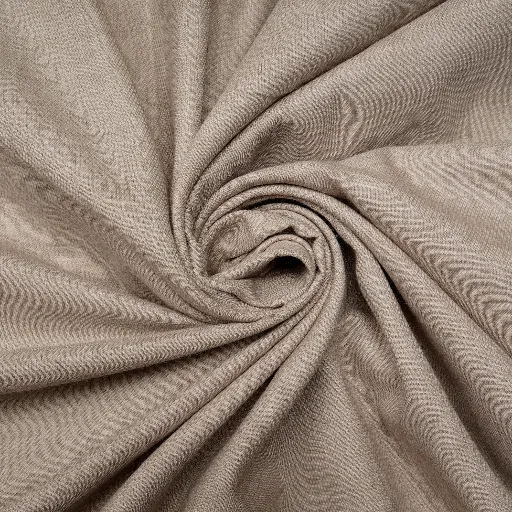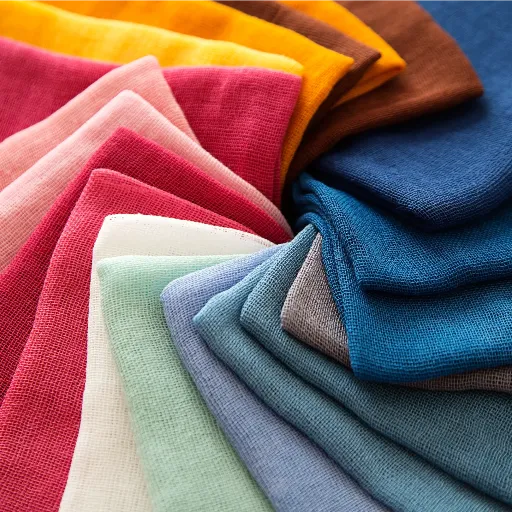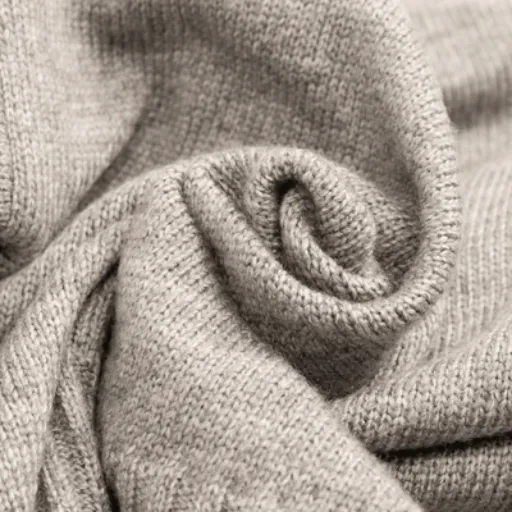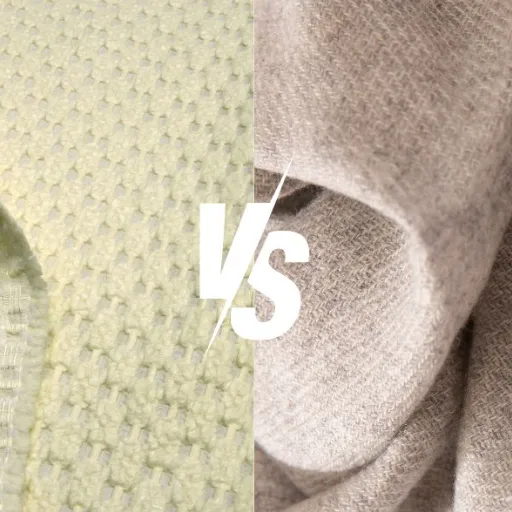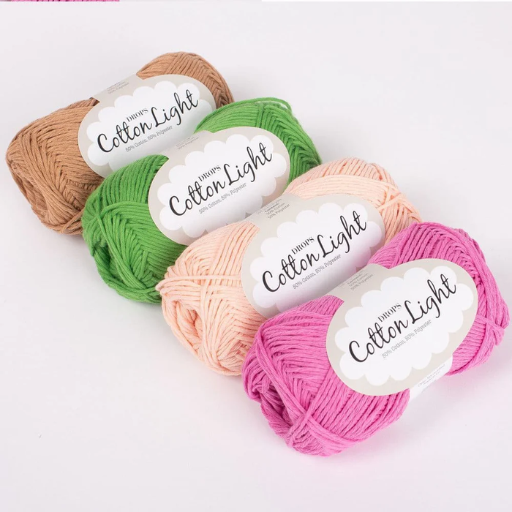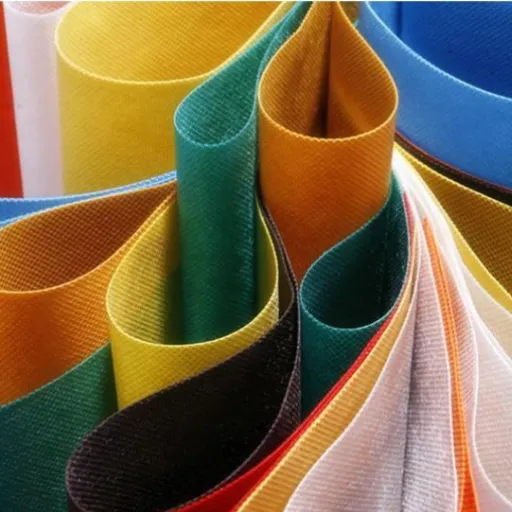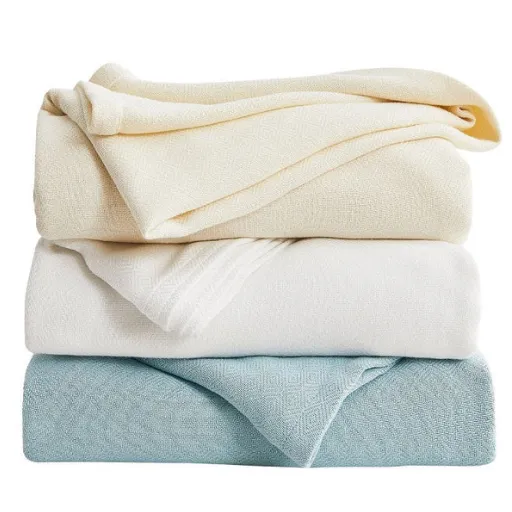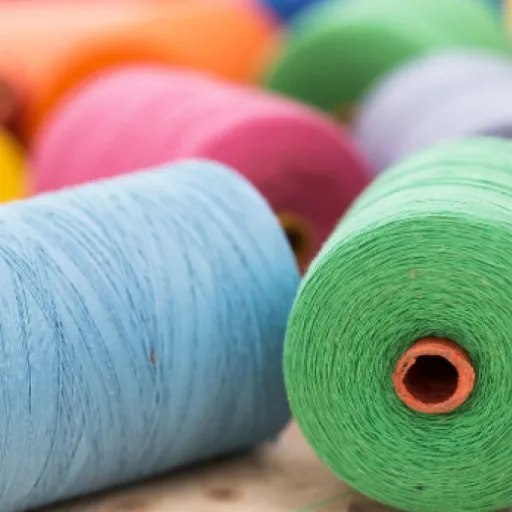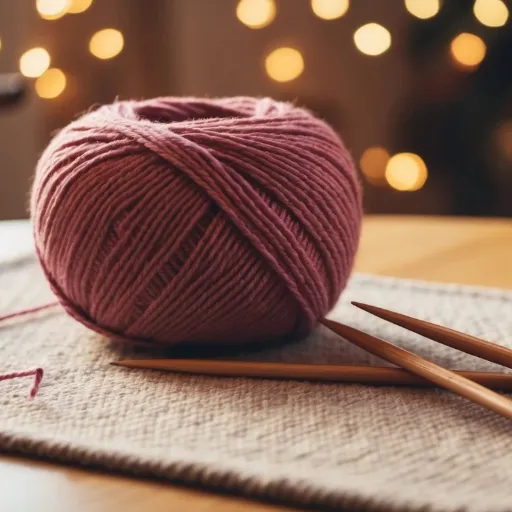Due to its cheapness, strength, and a wide range of bright colors, acrylic yarn has become a basic material in the knitting and crafting industry. Despite its usefulness and widespread acceptance, there is a complex story behind its impact on the environment and long-term sustainability. Is acrylic yarn spill-proof? How does it affect pollution and waste? Is there a way out for the crafters who want to be eco-friendly? This article addresses critical issues by revealing the truths about acrylic yarn, its impacts on the earth, and the sustainable options available to you. No matter whether you are a professional artist or just inquisitive about the materials you operate with, this inquiry will provide you with the ability to make decisions that are more informed and thoughtful.
Understanding Acrylic Yarn
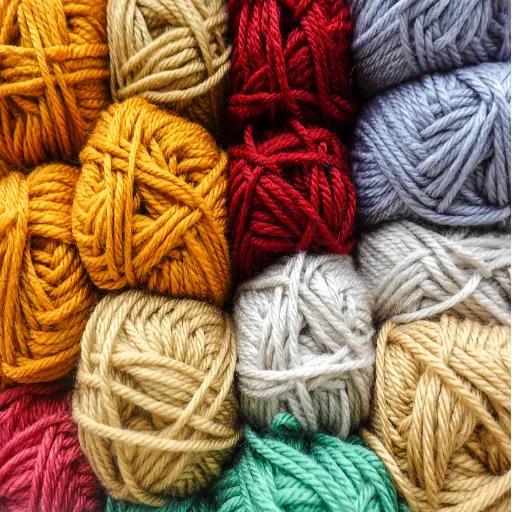
Acrylic yarn is a type of synthetic fiber created from substances called polymers, with acrylonitrile being the main one. The production process involves chemical reactions whereby the materials derived from petroleum are turned into long, light, and strong threads. The three main features of acrylic yarn — cheapness, versatility, and widespread availability — have made it a favorite among both crafters and textile manufacturers. Nevertheless, the fact that the material is non-biodegradable is a significant drawback; it can remain in landfills for several decades before being completely decomposed. In addition, through washing, the Acrylic yarn might release microscopically small plastic particles that could enter the water supply, thereby contributing to the existing environmental pollution problem. Although it is a practical and inexpensive choice, its negative impact on the earth suggests it might be better to consider eco-friendly alternatives, such as natural fibers or recycled yarns.
Production Process of Acrylic Yarn
Acrylic yarn production usually consists of acrylonitrile polymerization, which is the primary raw material coming from the oil refining process. To produce a polymer solution, acrylonitrile is mixed with some other chemicals in small proportions. After that, this solution can be spun into fibers either by wet or dry spinning techniques. In wet spinning, the polymer solution is forced into a coagulation bath where the solidification process forms the fibers. In dry spinning, on the other hand, the solution is subjected to warm air, which leads to the solidification of the fibers. The fibers are then washed, stretched, and crimped to attain the texture before being either cut into staple lengths or left as continuous filaments. Now the yarn is ready for industrial or consumer uses, as the fibers are dyed and spun.
The production process is very energy-intensive and largely depends on fossil resources, which raises concerns about the environment. The innovations in manufacturing are moving towards reducing these negative impacts by using recycled materials and enhancing energy efficiency step by step.
Popularity and Advantages of Acrylic Yarn
Acrylic yarn has become very popular because it is inexpensive, versatile, and long-lasting. Customers value its properties for imitating the softness and look of natural fibers, such as wool, while being more resistant to moths and other pests. It is also very light, which makes it a perfect medium for the production of clothes, blankets, and other knit or crocheted items. Acrylic yarn comes in countless colors and textures, collaborating with various creative ways. Moreover, the fact that it can be washed in a machine increases its popularity, especially among those who want their clothes and other items to be low-maintenance. The worldwide demand for acrylic yarn is robust, as indicated by search interest. Queries related to acrylic yarn uses and projects consistently rank high among crafting enthusiasts and professionals, reflecting this global demand.
Environmental Impact of Acrylic Yarn
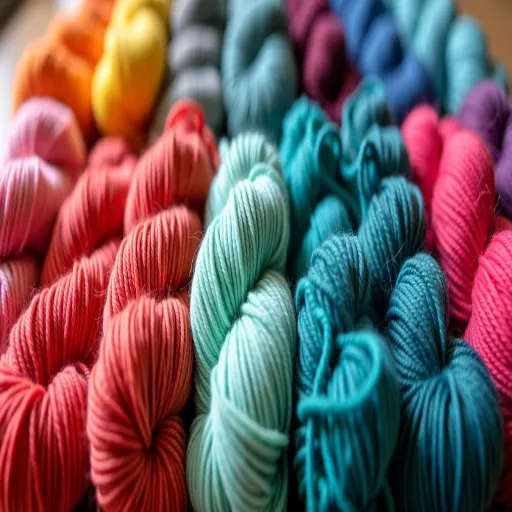
Acrylic yarn’s adverse effects on the environment are significant and mainly due to its synthetic origin. Polyacrylonitrile is the main ingredient, derived from the processing of plastic made from fossil fuels, which contributes to the aforementioned adverse effects and the pollution caused by plastic production. Not to mention, acrylic is not biodegradable, so it will stay in the environment for ages. It will most likely lead to microplastic pollution as it degrades over time. Moreover, washing acrylic yarn products can release microfibers into water bodies, thereby affecting marine life. The main reasons for its popularity are its long life and low price; nevertheless, these environmental issues highlight the situation, calling for responsible use and proper disposal as measures to mitigate the impact.
Non-Biodegradability of Acrylic Fibers
Acrylic fibers, which are made from synthetic polymers, are naturally non-biodegradable because of their chemical makeup. They do not decompose naturally and thus stay in landfills or the environment for a very long time, sometimes even centuries. Recent studies have pointed out that the long-lasting nature of acrylic materials is one of the factors contributing to the problem of plastic waste in the world. Data from environmental researchers show that synthetic fibers, including acrylic, represent a large part of the microplastics present in water ecosystems. Efforts to solve this problem mainly focus on recycling, reducing synthetic fiber use, and promoting sustainable materials to minimize environmental impact.
Carbon Footprint of Acrylic Yarn Production
The production of acrylic yarn makes an indirect but significant contribution to global warming because its manufacturing process consumes a lot of energy and partly relies on fossil fuels. In simplest terms, acrylic is a synthetic polymer made from acrylonitrile, a chemical that is not only expensive to obtain but also consumes a lot of energy. Recent studies say that refining acrylonitrile and the accompanying vaporization of its by-products are the top two contributors to the global warming potential (GWP) emission. Again, high-temperature spinning and finishing methods of acrylic yarn result in the most severe environmental impact. Therefore, we cannot consider acrylic yarn production carbon-neutral unless we clean up the energy sources, make the processes more efficient, and even look for bio-based alternatives to synthetic acrylic materials.
Comparing Biodegradability: Acrylic vs. Natural Fibers
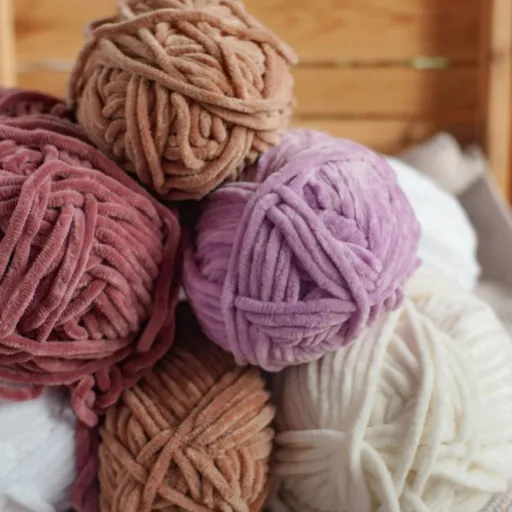
Acrylic fibers are man-made and made from petroleum products, so they do not decompose naturally. This quality results in much slower biodegradation of synthetic fibers compared to cotton, wool, and hemp, the natural fibers with the fastest biodegradation rates. Under favorable conditions, the latter can be composted in just a few months because its organic nature allows it to break down quickly. Acrylic fibers persist for 10 to 100 years and pollute the environment due to their long-lasting nature. This apparent contrast in the environmental impact of the two types of fibers favors the use of biodegradable natural fibers for waste reduction and minimizing ecological impact.
Introduction to Natural Fibers
Natural fibers are obtained from flora, fauna, and minerals, making them not only versatile but also sustainable in many of their applications. The most common natural fibers are cotton, wool, silk, hemp, and linen; each of them has special properties that make them indispensable in different industries. For example, cotton is very breathable and soft, making it suitable for garments. In contrast, hemp, due to its durability and resistance to insects, is considered a sustainable option for manufacturing textiles and ropes. As the world becomes increasingly concerned about the impact of pollution and the drawbacks of synthetic fibers, natural plant and animal fibers emerge as the most suitable and eco-friendly option. Not only are they supportive of the environment, but they also attract customers seeking green materials, as the demand for the sustainable market is increasing.
Side-by-Side Comparison of Production and Usage
Here’s a concise side-by-side comparison table of Acrylic vs. Natural Fibers based on production and usage, incorporating the latest research:
| Parameter | Acrylic Fibers | Natural Fibers |
|---|---|---|
| Raw Material | Petroleum-based (synthetic) | Plant/animal-based (renewable) |
| Energy Use (Production) | High energy-intensive | Moderate to low energy |
| Carbon Footprint | High due to fossil fuels | Lower, varies by fiber type |
| Biodegradability | Non-biodegradable, persists for centuries | Biodegradable, decomposes in months to years |
| Microplastic Pollution | Releases microplastics during washing | No microplastic release |
| Water Use (Production) | Low water use | High for cotton, low for hemp/wool |
| Chemical Use | Toxic chemicals in production | Minimal for organic fibers |
| Durability | Highly durable, resists wear | Durable but varies by fiber |
| Texture | Smooth, sometimes plasticky | Soft, breathable, natural feel |
| Care Requirements | Machine washable, easy to maintain | Often hand-wash, delicate care |
| Cost | Affordable, widely available | Higher cost, varies by type |
| Environmental Impact | High contributes to pollution | Lower, eco-friendly options available |
| Sustainability | Low fossil fuel dependency | High for organic and renewable fibers |
Sustainable Alternatives to Acrylic Yarn
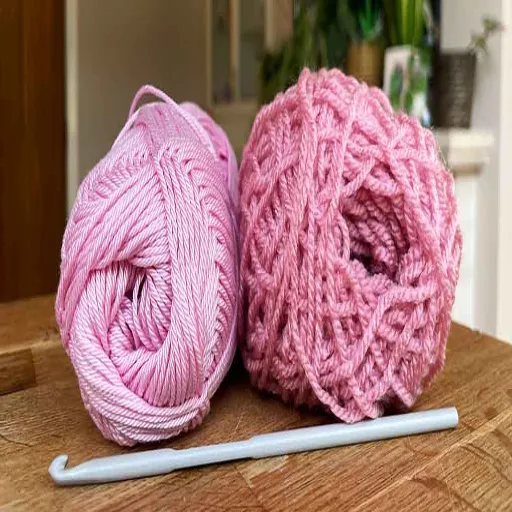
- Organic Cotton
An eco-friendly fiber that is natural and renewable has a soft and breathable texture. Cotton is pesticide-free, and it uses less water than conventional cotton. - Bamboo Yarn
This yarn comes from the rapidly growing bamboo plant; it is biodegradable, sustainable, and has a smooth texture. Bamboo yarn is also antibacterial and moisture-wicking. - Hemp Yarn
Being a sustainable and durable option, hemp needs very little water and no chemicals to grow. It becomes softer with usage, making it a great sustainable option. - Recycled Yarn
It is produced from post-consumer items like plastic bottles or waste fabric, thus helping to decrease landfill waste and the requirement for new resources. - Wool
Wool, a fiber that comes from sheep and is natural, is a renewable, biodegradable, and excellent insulator. For better sustainability, choose wool that is either ethically sourced or organic.
Recycled Acrylic Yarn
Every year, a considerable amount of acrylic waste, both pre-consumer and post-consumer, is used for producing recycled acrylic yarn, which includes burnt-out textiles and manufacturing leftovers. This technique not only prevents the new acrylic fiber from exceeding environmental limits but also keeps the waste out of landfills. Acrylics, in general, are synthetic fibers made from petroleum. Still, the recycling of acrylics lowers the demand for virgin raw materials and, consequently, also cuts down the emission of greenhouse gases during the production of the fiber. Recycled acrylic yarn retains many features of regular acrylic, such as its strength, lightness, and resistance to moth attack; thus, it is a helpful option for various projects. By using recycled acrylic yarn, makers and dealers not only benefit from a versatile and functional material but also contribute to a more sustainable economy.
Eco-Friendly Natural Yarns
Eco-friendly natural yarns are derived from renewable and biodegradable materials, making them an excellent choice for sustainable crafting. Synthetic alternatives leave a much larger environmental footprint, whereas organic cotton, bamboo, hemp, and wool are the most popular options due to their lower impacts. For instance, organic cotton is the least harmful option, free of pesticides and water-consuming methods, while bamboo is favored for its speedy growth cycle and low resource consumption. Hemp yarn offers the dual benefits of strength and eco-friendliness, as it helps restore soil nutrients during farming. The nature of wool is such that it keeps you warm while allowing your body to breathe. When sourced responsibly, it is a renewable and biodegradable product. Choosing eco-friendly, natural yarns not only helps to reduce carbon footprints but also supports sustainable agriculture and ethical production practices. The move to greener alternatives is a small yet very effective step towards a more planet-friendly future.
Practical Tips for Eco-Conscious Crafters
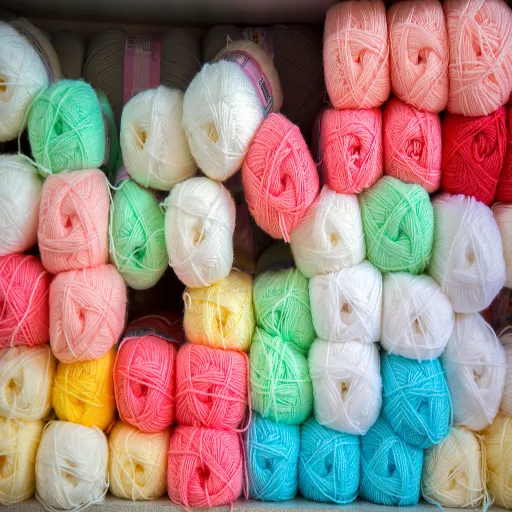
Choose Sustainable Materials
Select natural fibers such as organic cotton, bamboo, or recycled yarns. Make sure they are certified by reputable organizations like GOTS (Global Organic Textile Standard).
Repurpose and Reuse
Use scraps, leftover yarns, or materials from previously made projects. Upcycling can revitalize what would otherwise become waste.
Support Ethical Brands
Get your supplies from those who are committed to sustainability, fair labor practices, and eco-friendly production methods.
Minimize Waste
Plan your projects carefully to avoid buying too much and to reduce material waste. Get a supply of adaptable materials that you can use for different projects in the future.
Mindful Purchasing of Yarn
Purchasing yarn involves weighing factors such as sustainability, origin, and quality, among other considerations. Instead of synthetic fibers, it’s better to use natural ones like organic cotton, wool, or bamboo, because they are biodegradable and are mainly produced with less environmental impact. Look up brands that have been traced back to ethical sourcing, often from local farmers or artisans. Alternative yarn suggestions include those made from recycled or reclaimed materials, which greatly help manage waste by turning materials that would otherwise be discarded into something new and valuable. Always strive for the least possible waste and the most considerate consumption by only purchasing the yarn you need for a project.
Washing Practices to Reduce Pollution
Washing is one place where I apply the rule of using cold water and green detergents to somewhat lower the impact on water pollution and energy consumption. If I can help it, the dryer will not be used; I choose air drying for my garments. I trap microfibers that come out during washing with a microfiber filter or a special bag made for this purpose. By doing laundry less often and only when necessary, I can reduce the strain on both nature and my clothes. All these little measures have a significant effect on the way toward sustainability.
Reference Sources
Below are three sources that are considered professional and reliable and would testify to the correctness of your article regarding the biodegradability and environmental impact of acrylic yarn:
CompoBastFiber GUIDE
Source: Academia.edu
Relevance: The paper discusses biodegradable materials and cites acrylic as a type of organic fiber, thereby shedding light on the characteristics of synthetic fibers.
Explorative Materials & Sustainable Fashion in the Fashion Industry
Source: University of Missouri
Relevance: The article deals with the issue of acrylic and other materials’ presence and impact in the fashion industry by comparing their sustainability and biodegradability.
The Wild Civilized: An Environmental Art Studio Installed Outdoors in an Institutional Space
Source: University of Nebraska-Lincoln
Relevance: Discusses environmental art made of acrylic yarn and suggests the material’s environmental impact by implying its contexts.
Frequently Asked Questions (FAQs)
What is acrylic yarn made from?
Acrylic yarn is made from synthetic fibers derived from a type of plastic known as polyacrylonitrile. This process involves converting natural gas and petroleum into the final product, which is lightweight and versatile.
How does acrylic yarn compare to wool yarn?
When comparing acrylic yarn vs wool yarn, acrylic is often cheaper and more resistant to moths and mildew. However, wool is a natural fiber that offers breathability and moisture-wicking properties, making it suitable for sensitive skin.
What are the pros and cons of using acrylic yarn?
The pros of using acrylic yarn include its affordability, vibrant color options, and ease of care. However, the disadvantages of acrylic yarn include its tendency to pill, lack of breathability, and potential to shed, which may impact the environment.
Does acrylic yarn biodegrade?
Acrylic yarn does not biodegrade easily. It can take years to biodegrade, as it is a synthetic material that does not break down like natural yarns such as cotton or wool.
What is the environmental impact of acrylic yarn?
The environmental impact of acrylic yarn is significant because it is made from petroleum-based products. This not only contributes to pollution during its production but also raises concerns about acrylic items not breaking down in landfills.
Is acrylic yarn bad for the environment?
Acrylic yarn can be considered bad for the environment due to its synthetic nature and the toxic fumes released during its production process. Additionally, it contributes to plastic waste since it does not biodegrade.
What are common uses for acrylic yarn?
Acrylic yarn is commonly used for a variety of projects, including blankets, scarves, and toys. Its durability and affordability make it a popular choice among crafters looking to create items made with acrylic.
How does acrylic yarn affect those with sensitive skin?
Acrylic yarn may not be the best choice for individuals with sensitive skin, as it can cause irritation or discomfort. Wool and cotton are often recommended as alternatives for those seeking natural fibers that are gentler on the skin.
Can I combine acrylic and wool yarn?
Yes, combining acrylic and wool yarn can yield a blend that takes advantage of the benefits of both materials. This mix can provide the softness of wool while maintaining the durability and colorfastness of acrylic.








